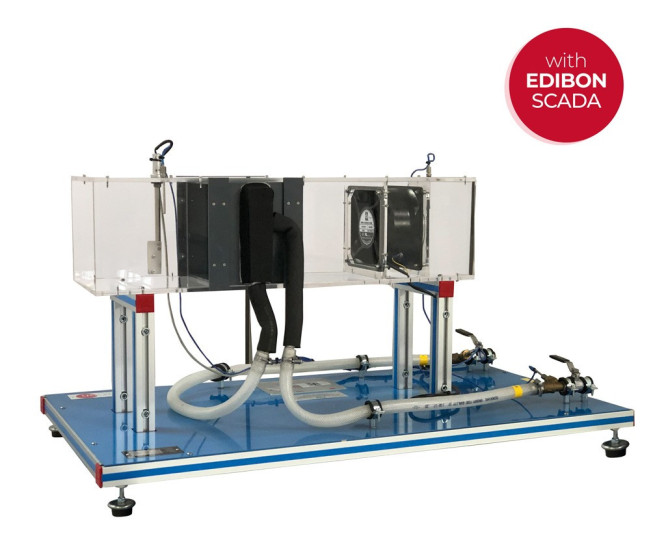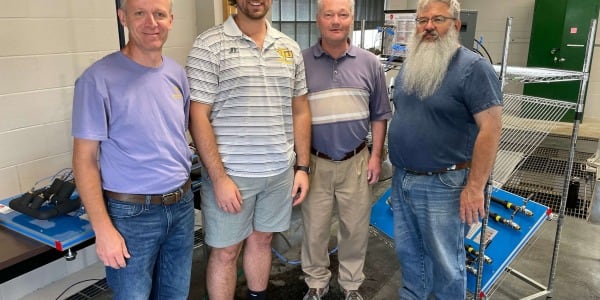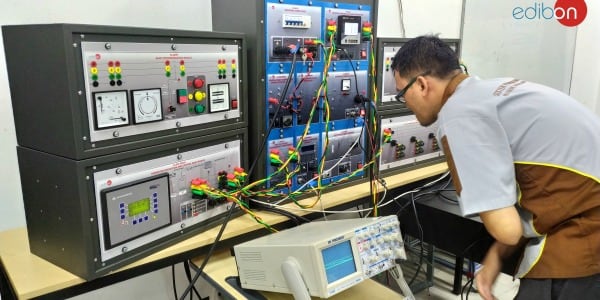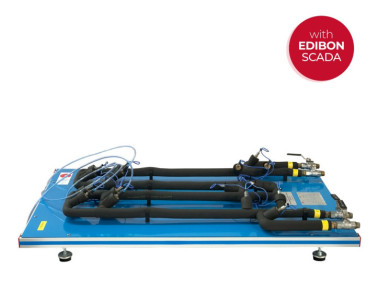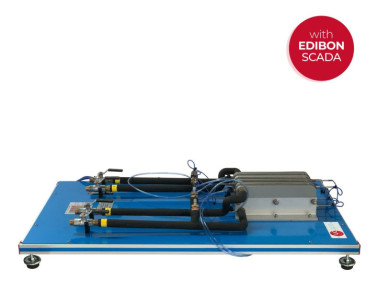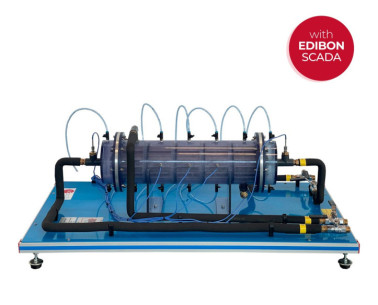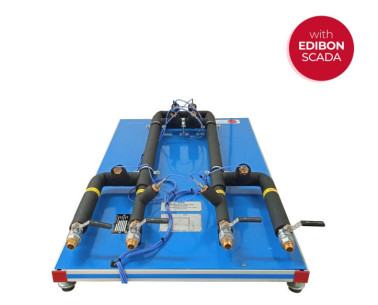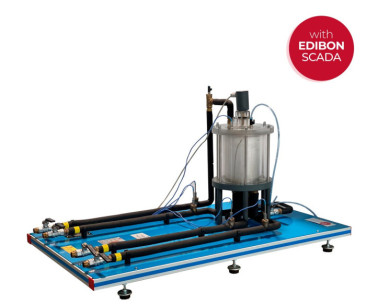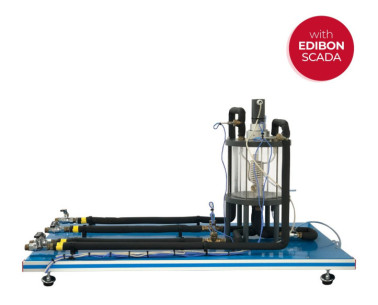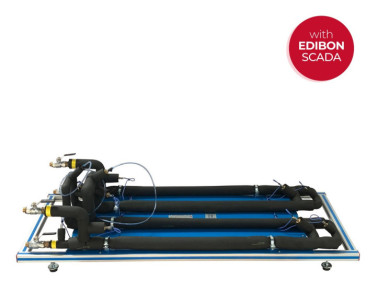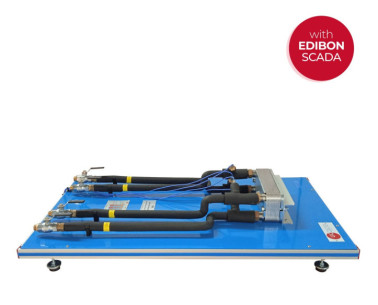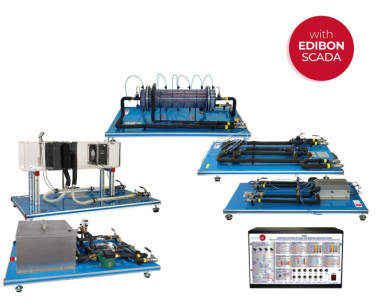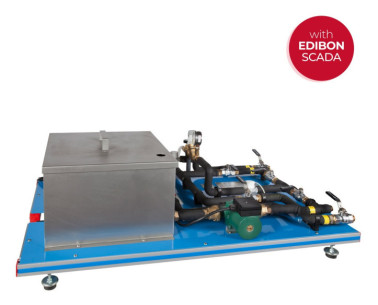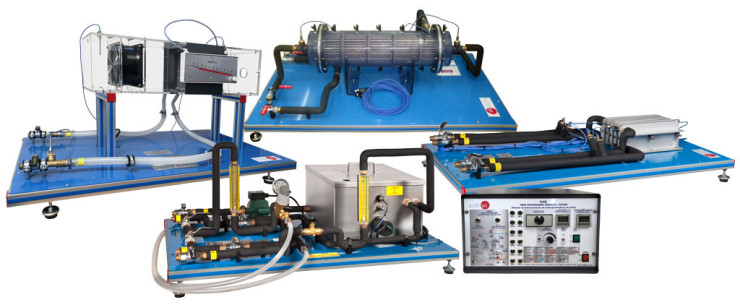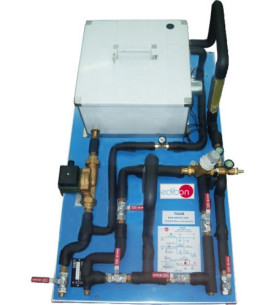TICF Cross Flow Heat Exchanger for TICC
INNOVATIVE SYSTEMS
The Cross-Flow Heat Exchanger for TICC, "TICF", designed by EDIBON, provides an effective thermal research tool by enabling the study of heat transfer between two fluids in a cross-flow configuration. In this system, a stream of hot water from the base unit interacts with an airflow generated by a fan through a perpendicular radiator.
Laboratories
RELATED NEWS
General Description
The Cross-Flow Heat Exchanger for TICC, "TICF", designed by EDIBON, provides an effective thermal research tool by enabling the study of heat transfer between two fluids in a cross-flow configuration. In this system, a stream of hot water from the base unit interacts with an airflow generated by a fan through a perpendicular radiator.
This heat exchanger features an innovative design that allows for adjusting its operation to enhance performance and ensure adequate heat flow between the fluids. Additionally, it enables conducting practices such as the overall energy balance in the exchanger, determining effectiveness using the NTU Method, analyzing the influence of flow rate on heat transfer by calculating the Reynolds number, evaluating the correction factor F, and studying the effect of temperature differential on the heat transfer coefficient.
In summary, the Cross-Flow Heat Exchanger for TICC, "TICF", offers a unique opportunity to deeply understand and apply the fundamental principles of heat transfer in this specific configuration. This type of exchanger is widely used in various industries where transferring heat between two fluids flowing in orthogonal directions is required, enabling efficient and controlled thermal exchange. From building cooling and heating systems to the food and beverage industry, as well as the chemical and automotive industries, the Cross-Flow Heat Exchanger for TICC, "TICF," designed by EDIBON, becomes an invaluable educational and research unit for students, teachers, and researchers interested in understanding this type of exchangers.
To work with this unit, the Base and Service Unit, "TIUS", is required, which provides key functions such as heating water using a thermostatic bath, pumping hot water, regulating and measuring the flow rates of cold and hot water, measuring the inlet and outlet temperatures of cold and hot water, as well as measuring the pressure drop in the heat exchanger.
These Computer Controlled Units are supplied with EDIBON Computer Control System (SCADA), and includes: The unit itself + a Control Interface Box + a Data Acquisition Board + Computer Control, Data Acquisition and Data Management Software Packages, for controlling the process and all parameters involved in the process.
Exercises and guided practices
GUIDED PRACTICAL EXERCISES INCLUDED IN THE MANUAL
- Introduction to the concept of psychometric properties.
- Effect of temperature differential on the heat transfer coefficient.
- Familiarization with cross flow heat exchanger.
- Overall energy balance in the heat exchanger and study of losses.
- Determination of the exchanger effectiveness (NTU method).
- Influence of air and water flow on the heat transfer. Reynolds number calculation.
- Sensors calibration.
MORE PRACTICAL EXERCISES TO BE DONE WITH THE UNIT
- Study of the hysteresis in the flow sensors.
Other possibilities to be done with this unit:
- Many students view results simultaneously. To view all results in real time in the classroom by means of a projector or an electronic whiteboard.
- Open Control, Multicontrol and Real Time Control. This unit allows intrinsically and/or extrinsically to change the span, gains, proportional, integral, derivative parameters, etc, in real time.
- The Computer Control System with SCADA and PID Control allow a real industrial simulation.
- This unit is totally safe as uses mechanical, electrical and electronic, and software safety devices.
- This unit can be used for doing applied research.
- This unit can be used for giving training courses to Industries even to other Technical Education Institutions.
- Control of the TICC unit process through the control interface box without the computer.
- Visualization of all the sensors values used in the TICC unit process.
- By using PLC-PI additional 19 more exercises can be done.
- Several other exercises can be done and designed by the user.
SIMILAR UNITS AVAILABLE
Plate Heat Exchanger for TICC
Shell & Tube Heat Exchanger for TICC
Concentric Tube Heat Exchanger for TICC
Jacketed Vessel Heat Exchanger for TICC
Coil Vessel Heat Exchanger for TICC
Extended Concentric Tube Heat Exchanger for TICC
Extended Plate Heat Exchanger for TICC
SUPPLEMENTARY EQUIPMENT
Computer Controlled Heat Exchangers Training System
Base Service Unit (Common for all available Heat Exchangers type "TI")
Concentric Tube Heat Exchanger for TICC
Extended Concentric Tube Heat Exchanger for TICC
Plate Heat Exchanger for TICC
Extended Plate Heat Exchanger for TICC
Shell & Tube Heat Exchanger for TICC
Jacketed Vessel Heat Exchanger for TICC
Coil Vessel Heat Exchanger for TICC
Turbulent Flow Heat Exchanger for TICC
Heat exchanger Training System
Base Service Unit (Common for all available Heat Exchangers type "TI..B")
Quality

AFTER-SALES SERVICE

 Cookie preferences
Cookie preferences

